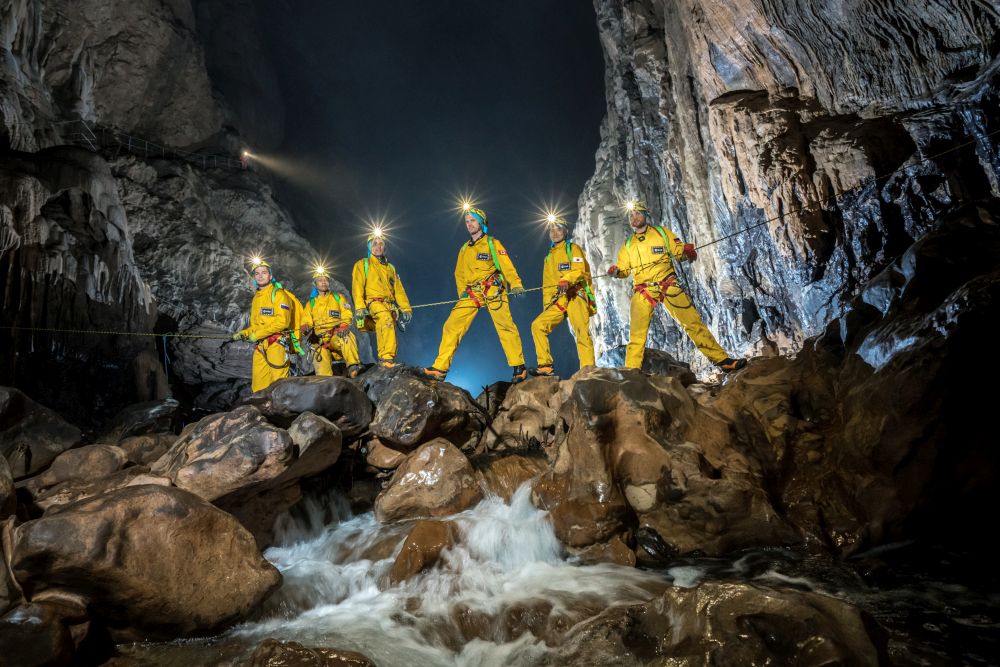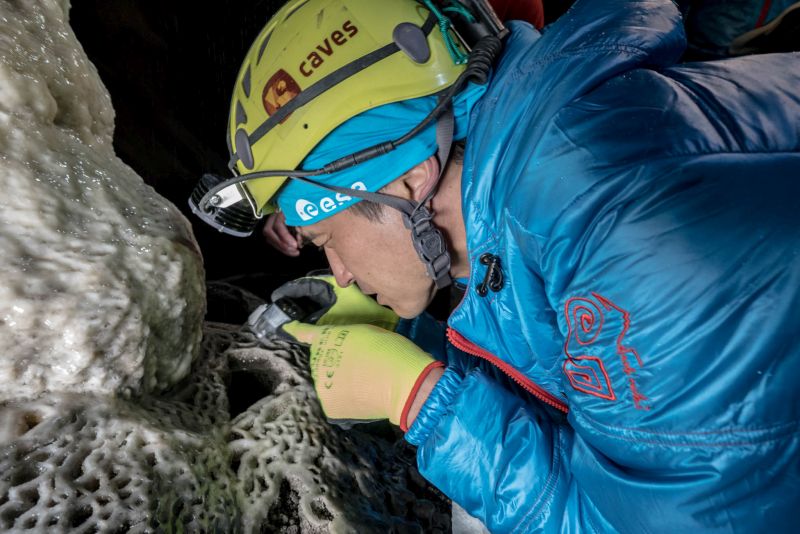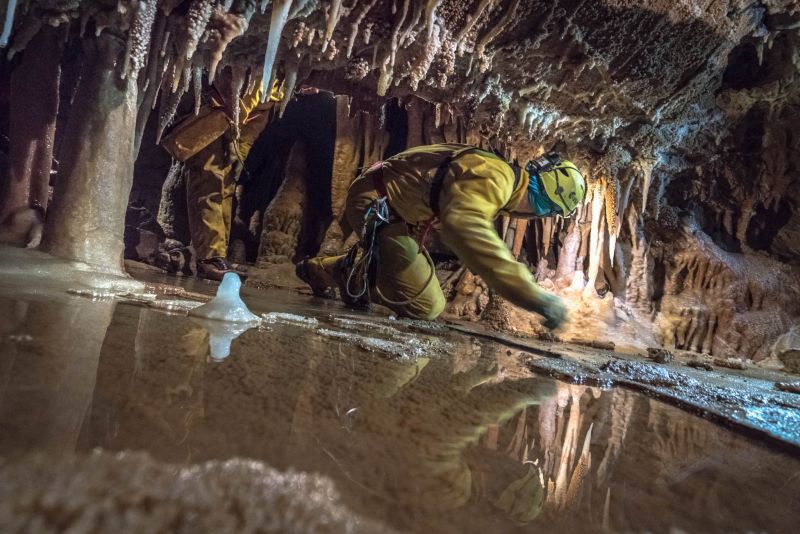We’re accustomed to astronauts pulling off their missions without a hitch. They head up to the International Space Station for months at a time and do what they do, then come home. But upcoming missions to the surface of the Moon, and maybe Mars, present a whole new set of challenges.
One way astronauts are preparing for those challenges is by exploring the extreme environment inside caves.
The European Space Agency’s CAVES (Cooperative Adventure for Valuing and Exercising human behaviour and performance Skills) program is a three week training program for astronauts. In CAVES, teams of astronauts learn to work cooperatively, safely, and effectively in multicultural teams.
This week a team of six astronauts is spending a week running experiments deep inside a cave in the Karst Plateau in Slovenia. The time is spent doing experiments like searching for microplastics. They’re testing the water chemistry and finding ways to follow the water and understand how it flows through caves. They’re also looking for signs of any extreme life that is adapted to the cave.
To accomplish all that, the astronauts need to overcome physical obstacles together, map the caves, capture images, and collect scientific samples.

But maybe the most important part of their mission is to figure out how to work together in a diverse group of people. They’re learning how to communicate effectively, cooperate, and solve problems. Leadership and team dynamics are under pressure too.
Their work starts before they enter the caves. The astronauts spent a week above ground preparing for the mission. They use that time to prepare for the mental challenge of being in a confined space with no privacy. They also have to prepare for all of the technological challenges they’ll face with minimal equipment.

The team of astronauts will perform a total of 12 scientific experiments once they’re inside the caves, focusing on the delicate climate, fauna and water of the cave. A key part of their work is the hunt for life.
“This will be the first time that a team will observe subterranean life for several days in this particular cave of the Karst Plateau,” points out Franci Gabrovšek, professor at the Karst Research Institute ZRC SAZU in Slovenia, in a blog. “We hope to find new species again,” says Franci. It was the ESA’s second CAVES expedition that discovered the crustacean Alpioniscus sideralis in 2012.
Alpioniscus sideralis is notable because it’s completed an evolutionary cycle from living in water, to on land, to back to water.
The biology inside the caves is of particular interest to the CAVES team. There’s no light there, and not much food. But caves still host species that have figured out how to live in these extreme environments. Species found in caves can be very rare, and their presence can help scientists reconstruct climatic conditions and habitats.
The astronauts will collect specimens from the walls and floors of the caves, as well as from rocks and pools of drip water. The’ll analyze the DNA and study the morphology. Those analyses and observations will shed some light on how lifeforms have adapted to the cave environment.

Of particular interest are the extremophiles that have been found in caves. These microbes have adapted to nutrient-poor environments, and some of them use biological cycles based around nitrogen and sulfur, rather than carbon. Some of them live only on rocks. If we do encounter life somewhere in our Solar System, it’s possible those life forms will be extremophiles, drawing a parallel between the CAVES missions and the eventual exploration of other worlds in the Solar System.
While they’re underground, the astronauts will communicate with mission control on the surface. The surface team can follow the underground team’s progress on a generated 3D map, and locate the experiments they’re doing. They can pair the experiments with images the cave team sends to them, and they can also send comments to the underground team.

The six astronauts in this edition of CAVES are ESA astronaut Alexander Gerst, NASA astronauts Joe Acaba and Jeanette Epps, Roscosmos’ cosmonaut Nikolai Chub, Canadian Space Agency astronaut Josh Kutryk and JAXA’s Takuya Onishi. Chub and Gerst are serving as co-commanders of the expedition.
More:
- Press Release: Into the Deep
- ESA Blog: Science Beneath the Surface
- Press Release: Back to the Water
- Press Release: What is CAVES?

